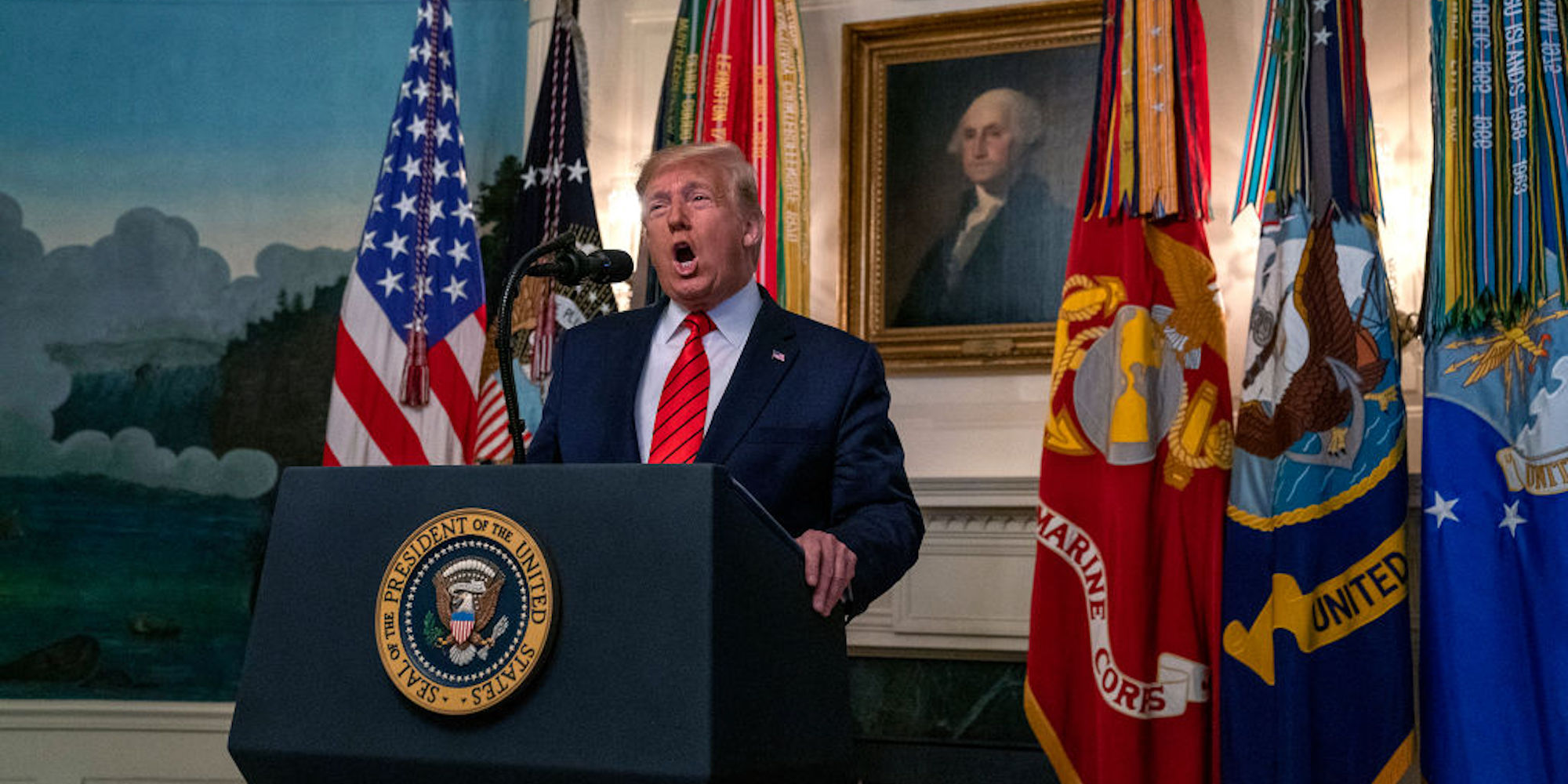- In a press briefing Sunday, President Donald Trump reveled in describing the US operation in northern Syria that killed the Islamic State terrorist group’s leader, Abu Bakr al-Baghdadi.
- Trump said US forces flew in a daring night raid across Russian-controlled territory, blew a hole in the side of the building where al-Baghdadi was taking shelter, and pursued him into a network of tunnels, where he detonated a suicide vest.
- US military and counterterrorism officials told news outlets that the details provided by Trump could assist terrorists wanting to protect themselves from future US raids.
- Visit Business Insider’s homepage for more stories.
In a press briefing broadcast live on Sunday, US President Donald Trump described in granular terms the raid in which US special forces killed Abu Bakr al-Baghdadi, the leader of the Islamic State terrorist group.
“When we landed with eight helicopters, a large crew of brilliant fighters ran out of those helicopters and blew holes into the side of the building, not wanting to go through the main door because that was booby-trapped,” Trump said.
But according to current and former military and national-security experts who spoke with the media after the raid, the gripping, public details – down to precise timings and tactics – could come back to haunt the US.
Trump relished describing al-Baghdadi as “whimpering and crying and screaming all the way” before his death, having been pursued into a network of subterranean tunnels by the US forces before detonating a suicide vest.
The president said that US forces had a detailed knowledge of the tunnel network and that his perspective following the raid from the White House Situation Room was "like watching a movie."
Trump mapped out part of the dangerous route taken by the airborne special forces to the terrorist's hideout in northwestern Syria. He said the aircraft traveled "very low and very fast," took an hour and 10 minutes, crossed territory held by Russia, and encountered enemy fire. The team, he said, took the "identical route" back.

Some security officials expressed concern that Trump's vivid description of the raid may have revealed too much - handing terrorists targeted by the US valuable information on evading capture or death.
Michael Leiter, who was director of the US National Counterterrorism Center when Osama bin Laden was killed by US special operations forces in 2011, discussed the issue with Vox on Sunday.
"Talking about how many aircraft, where the aircraft are flying in, how they're breaching a building, other technology they can bring to bear, knowledge about the tunnels and the mapping of those tunnels, these are operational details which are only about preening," Leiter said.
And speaking with Politico, current and former military officials and special-operations commanders questioned the commander-in-chief's decision to describe details of the raid.
They said the president provided clues on how al-Baghdadi was located, details on the network of tunnels into which he fled, and information about how they accessed the building.
They questioned why he revealed that US special forces took time after the assassination gathering intelligence, ultimately staying at the site for two hours.
"There's no reason to reveal that," a former special-operations commander told the publication.
"You're giving them another way to think about how long forces on the ground are vulnerable. Timing on an objective is something where you never want the bad guys to know what your procedure was or how long it took."
Trump has faced criticism in the past for disclosing highly sensitive information on military and intelligence operations.
In August he tweeted a highly detailed picture of an Iranian rocket-launch site that experts said had most likely been included in his classified intelligence briefing.
The theatrical manner of Trump's announcement of al-Baghdadi's death differed from the measured announcement of bin Laden's death delivered by President Barack Obama in 2011.
But the criticisms they received in the wake of the announcements haven't been so different. Obama administration officials were censured by some at the time as revealing too much about the raid on the compound in Abbottabad, Pakistan.
Peter King, then chairman of the House Homeland Security Committee, called for an inquiry to be launched after it was revealed that Obama administration officials had briefed the film director Kathryn Bigelow for her film "Zero Dark Thirty" about the hunt for bin Laden.
There will always be a tension between a president's desire to gain political credit for a successful, high-profile operation and the desire of US military forces to cloak such operations in secrecy.
Some officials defended Trump, saying he was in fact deliberately vague about operational details that could compromise future raids.
"There's always a risk in saying too much," Robert Spalding, an Air Force general who served on Trump's National Security Council, told The Washington Post.
"But the thing I liked was, there were no pictures, there was no specification of types of aircraft used. Everything I saw in terms of what was released was quite vague."

